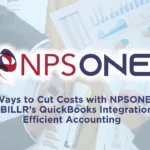
Is FinTech changing the way we bank?
FinTech, or Financial Technology, has become a big part of the banking and payments industries over the past decade. As digital technology continues to evolve, the bank sector and payments companies are forced to adapt to meet consumers and business owners’ changing needs and expectations. FinTech refers to the application of technology to financial services, which has enabled the development of new financial services, products, and payment services, changing existing products and moving them to digital channels. Personal and business needs are different, and the risk levels are different, which also presents challenges.
We will explore how FinTech is changing the way we bank. Along with the impact on traditional banking models, Community Banks, Credit Unions, and ATMs with the rise of digital banking, the emergence of new payment methods, and the potential for increased financial inclusion to underserved markets. We will also talk about the challenges and risks associated with FinTech, regulatory concerns, lack of oversight, cybersecurity risks, and possible job losses in the banking sector.
Traditional Banking Models vs. Digital Banking
The traditional banking model has been around for over 100 years, and banks provide a brick-and-mortar location for customers to come and do their banking business. Making deposits, opening accounts, getting change, withdrawing money, getting loans, and other financial services. Technology has advanced, and banking has become digital, with many customers accessing bank services through mobile apps.
Digital banking has some key advantages over a traditional bank; customers no longer have to visit a branch to perform routine transactions, such as checking account balances, transferring funds, or paying bills. Instead, consumers and businesses can do many of these tasks online or through a mobile device on the fly and do it 24-7.
Digital banking and NEO Banks have opened up new financial products and services possibilities. There are many digital-only banks, such as Chime, Axos Bank, Aspiration, Acorns, CIT Bank, and Ally Bank, to name a few. What are Neobanks? Neobanks or digital-only banks are not saddled by traditional technology and costly networks of branch locations. Instead, all banking services are done online using your computer or a mobile APP. There are two types of digital banks – one full-service offering loans, and another just focused on deposits and paying bills.
Community Banks and Credit Unions
Community Banks and Credit Unions can play an essential role in filling in some of the voids created by traditional banks closing branches and their consolidation and FinTech. When FinTech companies offer innovative solutions, and traditional banks have a large customer base, community banks, and credit unions can take advantage of the current situation. They have benefits that make them attractive to consumers and business owners and can provide a personal and local banking experience to the community in their area.
Another advantage they have is that they are smaller in size and focus on serving their local community, which allows them to have a close relationship with their clients and better understand the local market. They offer more personalized services and are more likely to make lending decisions and open accounts based on factors beyond credit scores, such as customer relationships and their contribution to the local community.
Financial Institutions Partnering With FinTech
Now’s the time for Banks, Community Banks, and Credit Unions should consider how to partner with FinTech companies. Banks can use all sorts of tools out there available to transform the traditional financial institution into a hybrid.
I attended the Financial Brand Forum in Las Vegas in 2022, and there were products to help banks from CRM, Data Analytics, Merchant services (from NPS), Kiosks, and more. These products can help banks keep current customers and attract new clients. They are servicing their current clients better by offering more loans and other financial services.
With banking going thru a digital transformation – the time is now to make a bold move.
Next Generation ATMs
The next Generation of ATMs is headed our way, and they will do more than dispense cash! You can get money or deposit it at a financial institution’s ATM. At non-bank ATMs, you can access a few more services like buying Cryptocurrency, Doing a transaction in International currency, surcharge-free networks, buying a gift card, making a donation, and more is on the way.
Soon the Next-Generation ATMs will have a kiosk-type feel, where you can pay a bill, open a bank account, and much more.
Banks can partner with an ATM company that could also help them get a better footprint in t their communities. For example, if the bank’s client is the local grocery store, the bank could put the ATM in the grocery store and have it be a surcharge-free ATM for their customers. Or place an ATM in a location, so your customer does not have to drive to the bank for various banking services.
Armored car services and smart safes, as many banks are looking for better ways to service clients. Smart safes are a great solution. The safe is at a customer location; the merchant puts the cash into the smart safe, and the money is counted, deposited at the end of the day, and picked up once or twice a week or just picked up and deposited.
While many smaller banks do not have armored car services to accomplish this – this is an example of partnering with a company that can provide these services and offers this to the bank’s clients.
Traditional Merchant Account vs. Payfac Model
Merchant accounts for credit card processing are used by businesses to accept credit cards and there are different models. Traditional – where banks and credit card processing companies provide them through salespeople. Payfac model where the business signs up online, and there is generally fixed pricing. Each one has its advantages.
Traditional Merchant Accounts have lower fees if a business does a volume of transactions as pricing is discounted based on volume. There is more control over funds, customizable solutions, multiple software solutions, hardware options, and better customer service and integration to many software products.
Payfac model, Payfacs have been around for a while, Square, PayPal, and Stripe, to name a few, are growing in number. These options might be a better option for smaller businesses. Many software companies embedding payments into their software and doing a Payfac or Hybrid-Payfac model are joining the ranks and offering an all-in-one solution. Ultimately, the best payment processing option will depend on a business’s specific needs and goals.
New Payment Methods
FinTech companies have led to the development of new payment methods that are changing how we pay each other and businesses. One of the most important developments has been the rise of mobile payments and digital wallets. This allows customers to pay using mobile devices instead of a physical credit card.
Mobile payments are easy to use and allow consumers to make payments quickly and securely using Apple Pay, Google Pay, and other wallets on payment devices equipped with NFC (near-field communication). This also allows consumers to use tap and pay cards as well.
In addition to mobile payments, FinTech has also enabled the development of peer-to-peer payments that consumers use to send money to each other, like Cash App, Venmo, PayPal, Zelle, and others. Some of these apps have been under fire by Congress due to fraud, scams, and security issues. These apps must be addressed quickly and have been improving.
One of the drawbacks is that once you send the money using these apps, there is no way to get it back if you were scammed or made an error. Zelle has been under a lot of pressure to fix this, and the other apps need to make these changes to make their applications safer and give consumer protection.
Many apps allow customers to transfer money to one another directly, and some do not require a bank account if you need to move money from some of these apps to your bank account, which can take 24-48 hours.
Financial Inclusion
Another significant benefit of FinTech is increasing financial inclusion for underserved communities not being served by traditional banks. Community banks and Credit Unions can also help these communities, which may have been previously excluded from the banking system due to a lack of credit history or limited financial resources.
Many FinTech companies use alternative data sources, such as social media activity and rent payments, to assess creditworthiness and provide loans to individuals who traditional banks may have denied. Other companies are using blockchain technology to provide financial services to unbanked consumers.
FinTech can also benefit underserved businesses, which may have difficulty getting bank accounts or merchant services from a traditional bank. Some FinTech companies are using data, analytics, machine learning, and artificial intelligence algorithms to provide faster and more accurate assessments, making it easier for them to get access to funding so they can grow and thrive. Using FinTech to promote financial inclusion used to be challenging, but access to mobile devices has been increasing, making it more widespread.
Financial Literacy
Financial Literacy needs to make a comeback in the school system so that children of all ages can better understand how the system works. How to pay bills, manage money, file taxes, budget, stock market, investments, banking, and cover basic economics.
This needs to be covered on a personal level. Also, business owners or potential business owners need to understand better how the financial systems work and what they need to have to get loans, bank accounts, merchant services, and more.
Economics 101 needs to make a comeback in all levels of education so that everyone understands the system and requirements. As well as understanding why your credit score matters and how to make your credit score better. Along with now, to spot scams and fraudsters, so they do not get taken advantage of by scammers, scam texts, phishing emails, and more.
Regulatory Concerns
As FinTech companies and Neobanks evolve, regulatory concerns are growing. Congress continues to say, “Innovation is outpacing regulation.” I say that Congress needs to get its act together, bring in experts to help them, and look at what other countries are doing instead of reinventing the wheel.
FinTech’s work with the SBA has had mixed reviews. There was a ton of fraud with PPP loans and these companies. Rules are needed for Neobanks and Open banking; many proposals must be considered carefully to avoid issues. Zelle and other peer-to-peer apps have been under fire by Congress and The Consumer Financial Protection Bureau (CFPB), and improvements and protections must be implemented.
Data security for these companies, registration, and policies need to be universal across the board, or we will face challenges like the FTX debacle in the future. There are several lawsuits against FinTech companies now and regulation needs to address these issues so Consumers are protected like they are when they use a credit card. These issues will slow more adoption.
Cybersecurity Risks and Concerns
Another significant risk with FinTech is Cybersecurity, a concern for businesses in general. We rely on digital and cloud platforms to deliver all types of services, including financial services, and they are vulnerable to cyber-attacks and data breaches. These attacks can have serious consequences, including but not limited to theft of sensitive data, financial data, and personal identification information, and can result in losses for consumers and companies.
FinTech companies must protect their platforms and customer data from cyber threats, which must be monitored 24-7. This includes strong encryption, access controls, password protection, access controls, scans and conducting assessments regularly, and best practices mandated by the government by a legally created and monitored agency.
Too many agencies are involved in financial sectors, FinTech, and banking, but this needs to be addressed. An agency needs to regulate instead of just saying we don’t know what to do about all the innovation happening.
Potential Job Losses in Banking & FinTech
There have been several layoffs recently in the tech sector, FinTech, and banking due to branches closing due to banks merging. Banking models are changing and being disrupted by digital technology companies.
This can lead to some companies innovating and changing to meet consumers’ expectations. There will be a need for skilled tech workers for programming, data analysis, Cybersecurity, and more.
Training programs must be developed to support this growing need for banks and FinTech companies. Training programs for these types of jobs need to be offered at all levels, high school, technical schools, and colleges, and even employers need to provide training for some of these jobs.
Conclusion
In conclusion, FinTech is changing how we bank, make payments, access information, and run a business in various ways—the rise of digital banking, new payment methods, and increased financial inclusion. However, both challenges and risks are associated with FinTech and new technologies. There are also regulatory concerns and cybersecurity risks that are on the horizon.
FinTech continues to evolve, and regulators, businesses, and consumers must work together to address these challenges and ensure Finch can deliver on its promise of increased accessibility, efficiency, and innovation in the financial sectors. This will involve a combination of reforms, industry standards, and consumer education initiatives. Industry standards must be established so FinTech companies can operate safely and transparently. The public needs to trust these companies and know what they do with the collected data, which has been under fire by Congress for them to disclose.
Finally, consumer education can ensure that the public understands and is aware of the risks and benefits of using FinTech services and can make informed decisions about managing their finances. And also, the consumer needs to understand the costs of using any network, which needs to be transparent.
Overall the rise of FinTech is transforming the financial sector; banks, community banks, credit unions, FinTech companies, software companies, and credit card processors will evolve in the next 3-5 years, and consumers and businesses will benefit from these innovations.








